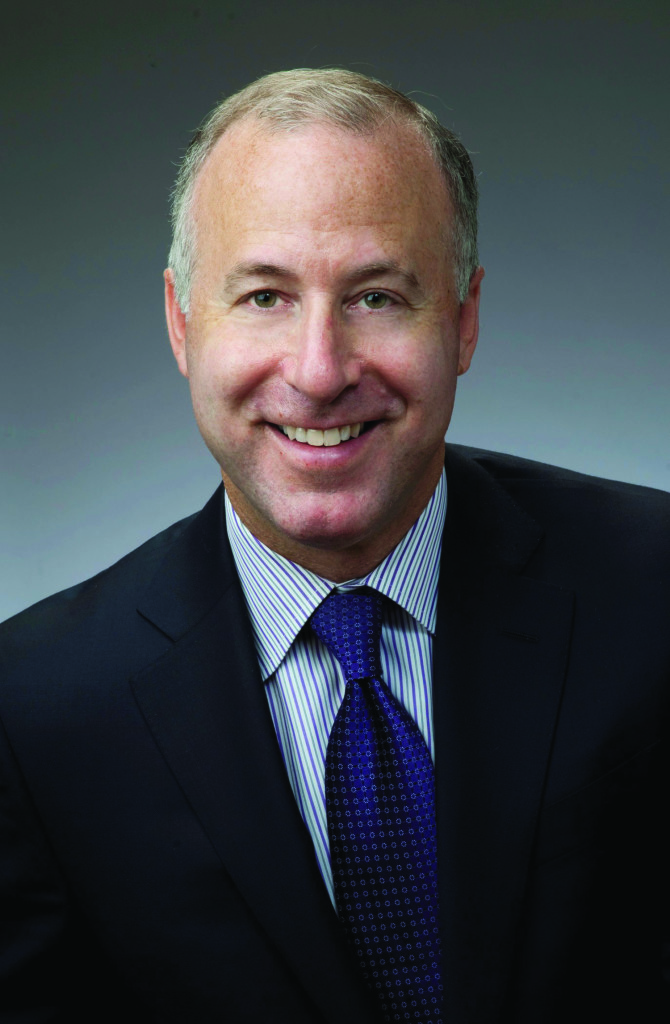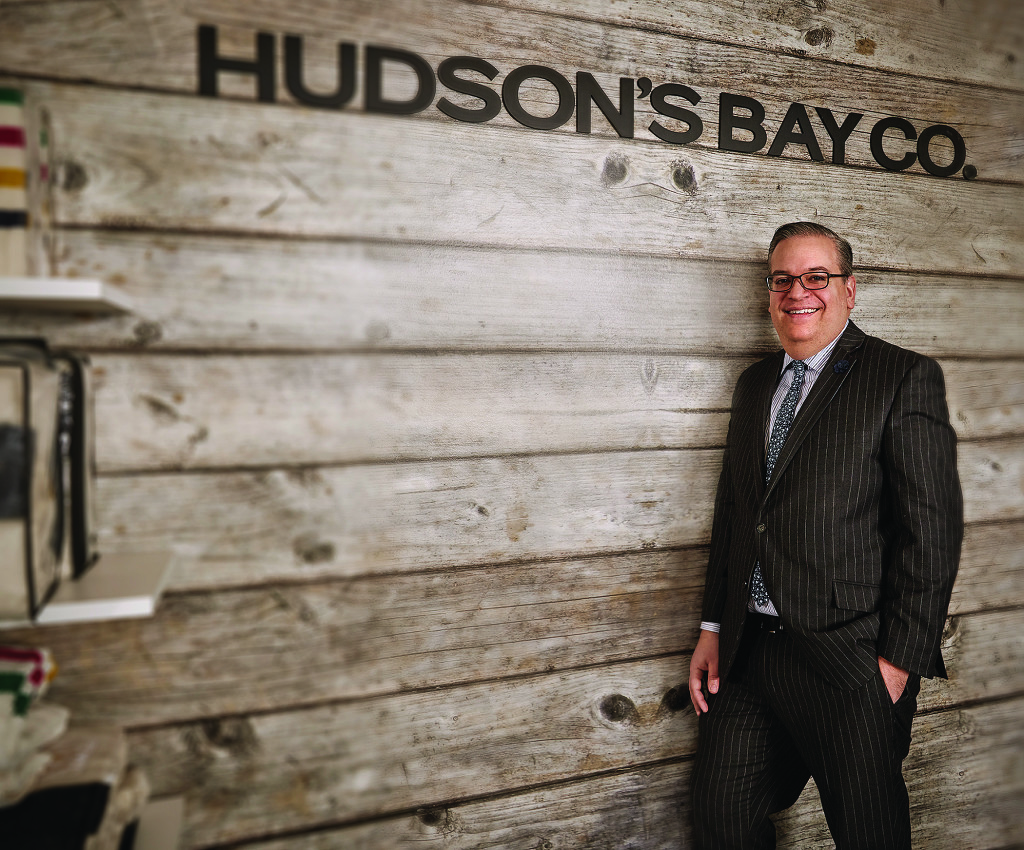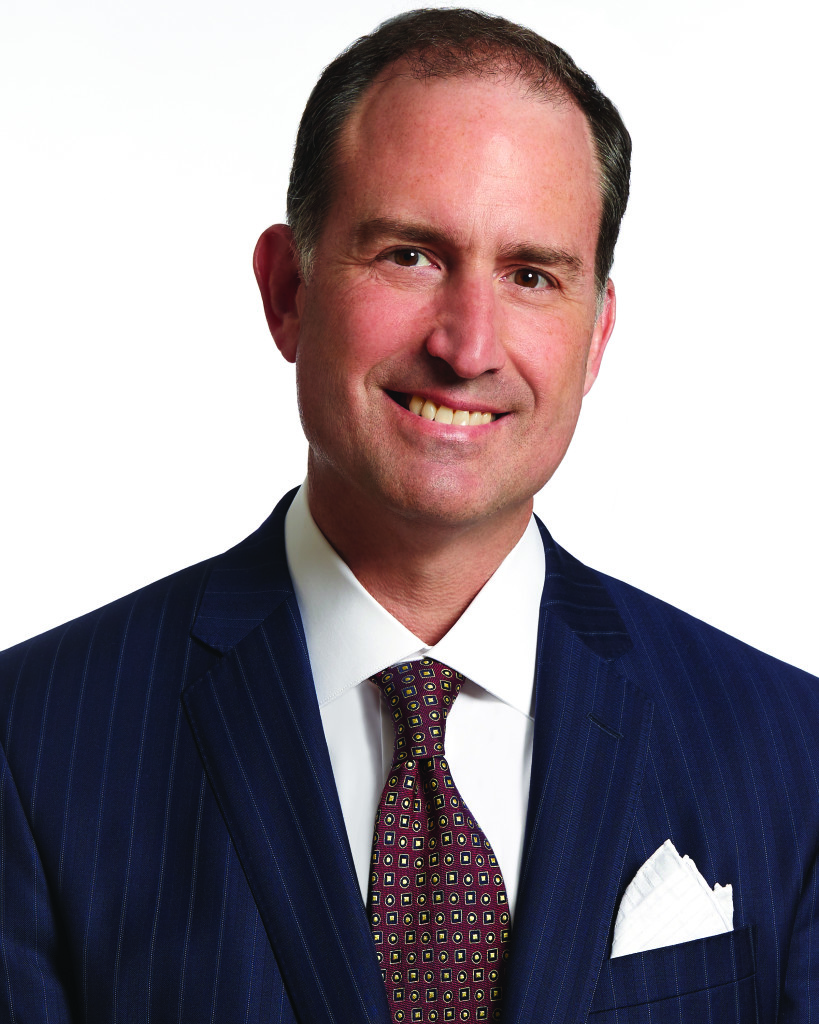TAILORED TRANSITIONS: TOP CLOTHING MERCHANTS DISCUSS THE SUIT BUSINESS


After a difficult year for tailored clothing retailers who likely face a precarious year to come, MR spoke to some of the top execs in the industry about the state of suits. Here, smart merchants from Saks, Suitsupply, Bloomingdale’s, Boyds, Mitchells and Lord & Taylor share some insights.
Q: How’s your clothing business doing and what changes are you making to accommodate evolving taste levels and shopping patterns?
David Fisher, Bloomingdale’s: Our tailored business has been good this fall, one of our best businesses in men’s. From Armani and Canali down to brands that target Millennials (in fit and price), we’ve found that guys are wearing suits differently and we’re trying to merchandise accordingly.
Dan Farrington, Mitchells: At just under half of our total menswear volume, tailored clothing has been driving our menswear sales for several years now. But these past few months, clothing business has slowed along with everything else. I don’t know why, other than the precarious state of the world and no notable change in model, fabric or fit. Considering recent price increases (an Italian designer sportcoat that retailed for $1,995 two years ago is $2,895 this season), I don’t see many compelling reasons for customers to buy more clothing. I’m planning conservatively, working harder than ever to find special items to play up.
Ken Gushner, Boyds: Our clothing business has been okay this season, not as bad as I’m hearing. Tailored clothing continues to drive store business, and while there’s no major change in silhouette or fit (slim has become mainstream), there are subtle shifts we can focus on. The best news is that while we’re not going back to the good old days, there’s renewed interest in dressing up, spearheaded by young people.
Nish de Gruiter, Suitsupply: We’re a 15-year-old company based in Holland; we’ve been open in the United States less than five years and have 17 stores with eight more in the works. Our business can offer a more sustainable price point because we’re vertically integrated, meaning we design, manufacture and sell in-house. We buy our fabrics from the best Italian mills and then ship them to our factories in Europe and Asia. With no middleman, we can offer value pricing (retails range from $399 for a half-canvas suit in 110s or 120s fabric to $999 for top goods in a full-canvas make) without ever going on sale. Most of what we sell is nested suits, with some separates in athletic fit and travel suits. Made-to-measure ($700-$2,200, with the average ticket at $1,450) is about 10 percent of our business and online is 25 percent and growing fast.
Tom Ott, Saks Fifth Avenue: It’s hard to say how well clothing is doing now that our menswear business is merchandised by lifestyle. We incorporate suits and sportcoats within both luxury and advanced designer collections. We were the first to do lifestyle floors so there’s no suit department per se; we don’t even have a suit buyer anymore! That said, the business clearly varies by region: there’s still an everyday suit business in the Northeast and other urban areas; in the South and the West, suits are far more for occasions. The other notable change is the growth in suit separates. This business was always a challenge for us, even when it dominated moderate department stores. But it’s finally caught on in luxury, not for sizing reasons, but because customers want the flexibility of wearing the pieces in different ways.
Tom Eckrich, Lord & Taylor: We’re also moving toward separates. For a long time we were trying to differentiate our stores from the guys across the mall by featuring nested suits: we felt it made us more upscale and fashion-forward. But the customer has clearly indicated a preference for separates and the numerous options these present. So two years ago, instead of offering a linen sportcoat in a bunch of colors, we offered pants to match the more neutral shades; this past spring, eight out of 12 colors had pants to match the sportcoats. We do the same in corduroy and even in formalwear, which has been a huge growth area for us. We feature tuxedos in black, white and silver with black trim; all marry back to a black tuxedo pant. I’d say that 40 percent of separates sales are one jacket to one pant.
Q: A swing to separates is interesting, but is it enough to drive clothing increases? Where is the growth coming from in tailored clothing?
Eckrich: Unfortunately, there’s no hot item or new trend, but sportcoats are helping. And corduroy separates, a 1970s throwback, are selling well. The other plus for us is some new fits we’ve introduced in Black Brown 1826. We’ve moved away from a generic slim fit and have revamped the specs; we’ve even named the new fits to create a lifestyle around each.
Gushner: I know the consensus is that we’ve gotten our mileage out of slim fit but I think there’s growth to be had. The press was way ahead of the consumer on this trend so plenty of guys are still wearing baggy suits. Sadly, I don’t see anything else on the horizon: I’d love it to be DBs or vests but they’re just a small part of the business. (Actually, we’d probably be selling more vests if it didn’t add so much to the ticket: $500-$600 in the better brands.) Fabric wise, I think we can sell more seasonal fabrics, which are definitely up-trending at Boyds. And bold patterns (windowpanes, plaids, color!) are also driving sales: I’d say that 70 percent of suit sales and 80 percent of sportcoat sales are patterned.
Farrington: We do a little vested and a little DB business but not enough to move the needle. And after five years of evolving toward slimmer fits, our customers are already there. Another concern: the softcoat, unstructured and unlined, has leveled off for us. This category is cyclical and until recently, it had been very strong. So for us, the solution is finding those special items—the travel blazer with infinite pockets, custom linings, new performance fabrics, etc. And we have a continued focus on made-to-measure, which generates about 20 percent of our clothing sales.
Ott: In addition to growing suit separates, we haven’t had anything new in about five years. Dark dressy suits are still driving sales and our own label continues to grow by leaps and bounds. (It’s now our number-two brand.) Our core customer, who has money, has a closet full of slim suits and needs a reason to buy more. So we’re focusing on fabric. We’re partnering with the mills to come up with special fabrics that we’re making up in updated models. Some styles might be reinterpreted from the archives; we did well in the late 1990s with a one-button peak lapel. But we’re sticking with modern: I don’t think guys want to go back to pleated pants. And DBs (although we bought some and sold some) are just too formal for today’s lifestyle.
De Gruiter: I don’t understand why the industry talks about fitted suits as a current trend: aren’t suits always supposed to fit? So that’s what we give our customers all the time. If you look back to the role models of the ’60s and ’70s, JFK and similar heroes, they wore suits that fit. And since tailoring is at the heart of our business, we feature our tailors in an open area at the front and center of our selling floors. As for what’s driving sales, our Jort Traveller suit (a deconstructed model in a wool/mohair blend that holds its shape perfectly, $599 retail) is probably our most popular item, followed by the Sienna, a soft shoulder style with ticket pockets (now $639 retail; it’s the suit that The Wall Street Journal ranked equal in quality to an Armani suit that sold for $3,600 when the judging was done in 2011).
Fisher: We’re very happy with our decision to lease space to Suitsupply. In fact, we’re rolling out several more Suitsupply shops this year. They offer another option to our clothing customers and while no increases these days are totally incremental, I don’t see that it’s hurting any of our other clothing brands. In fact, with these types of concessions, the customer gets a more vertical experience: outside the department store structure, the brand has more flexibility in terms of inventory, sellers, presentation, etc.

Q: It’s clear that Suitsupply has created an innovative business model based on value, service and lifestyle, but we have to believe some guys still want designer brands and Italian sourcing. Is country of origin a factor with your customers?
De Gruiter: Our customers never question country of origin. They appreciate proper fit and an eye for detail. You can buy a designer suit at any price but if it doesn’t fit well or the person who sells it to you doesn’t know how to fit it, it still doesn’t look good.
Gushner: I’ve always been a proponent of Italian fashion and quality, so we carry all the top Italian brands and sell a lot of $3,000 suits. That said, our top-selling brand is our own Trussini label (Italian fabric and Italian make at $1,295 for suits; $995 for sportcoats).
Farrington: At the high end, it’s still all about Italy, which probably generates 80 percent of our clothing sales. Recently, there’s been some interest in made in America.
Eckrich: Our suits go out the door at an average of $300, so we’re not making much in Italy and our customers don’t seem concerned about where the suits are produced. That said, we just introduced (Italian brand) Eleventy in our NYC flagship and we’re looking to cultivate that customer. And Hugo Boss (not Italian) is a major player in key doors ($895 ticket, aggressively promoted at $595).
Ott: Our customers do care and Italy is key. Our guys appreciate the exceptional make and sense of style that Italian fashion delivers. And with the current exchange rate, prices are getting better. For spring ‘16, five of our luxury makers have dropped prices so that suggested retails will be 15 percent lower than last year.
Q: To what extent are season-less fabrics still dominating the mix?
De Gruiter: Year-round fabrics still dominate but we’re adding more seasonal blends: wool/alpaca, linen/wool/silk and more fashionable fabrics.
Farrington: We’re adding more seasonal fabrics: linens, cottons, flannels. When you think about it, season-less fabrics are never quite right: they’re too light in winter and too heavy in summer. So we’re trying to teach our customers to dress for the season, which would be great for business if we’re successful.
Ott: Year-round fabrics do well because so many guys travel and the performance fabrics are year-round weights. Plus it’s risky to bring in heavier weights for fall. We can’t count on the weather; this past December it was in the 60s in NYC! For spring ’16, however, we’re showing more cottons and linens that lend themselves to casual dressing.

Q: Should tailored clothing be merchandised with sportswear on the selling floor?
Gushner: For us, lifestyle merchandising makes no sense: we have sellers who can bring customers a knit vest to work with a certain suit. We don’t need a mixed-up selling floor.
Fisher: I believe retailers need to be cognizant of new ways to wear tailored clothing and suggestive selling is an important part of this. Suits are being worn more casually, so it’s important for sellers to suggest the knit merino vest or the pocket square or the puffer vest worn over or under the suit jacket. And these new types of combinations allow customers to personalize their look, which is what guys want today. Clearly, we’re seeing more sportswear brands adding tailored pieces to their mix. For customers who shop by specific designer or brand, this lifestyle approach makes sense. But for Bloomingdale’s, as a department store, we still need a separate department for tailored clothing. We still have customers who come in to buy a suit.
Eckrich: I agree, but we’re looking to our brands to help us pull looks together across multiple licenses. Although department stores are merchandised by department, we can do a better job cross-merchandising via strong visuals, more mannequins and aggressive marketing.
Q: To what extent are you getting younger guys into your stores?
Eckrich: I think younger guys are shopping the vertical stores and online. So we’re aggressively going after them by offering more contemporary styles at more affordable price points. Not too long ago, we sold nothing but all-wool suits; today, we feature more affordable blends (poly/wool, poly/viscose) in modern styles that look great and price out well for young guys, who are not all that interested in “investment dressing”. We’re also doing more marketing via social media. Since Lord & Taylor is not the first name that comes to mind when it comes to young men’s suits, we’re hoping to change that.
Farrington: We have a several brands geared to Millennials: Boss in a few doors, Samuelsohn (not just a youthful model but also a value price point) and softcoats from Boglioli and Cucinelli. We’re fortunate to live in an area where young does not necessarily mean poor.
Ott: We get a lot of younger guys at our music and sports events, like the charity fashion show we just did with the New York Jets (40 percent clothing, 60 percent sportswear). We’re also doing a lot on Instagram, and we’re adding more tailored pieces online. These offerings are a little younger and more fashionable than in-store, and a little lower priced. (True luxury clothing is mostly an in-store business.)
Gushner: I believe stores have got to get younger: not just the product but the ambiance, the marketing, the sellers and the buyers. We’re on the verge of a major remodel to begin in June. We’re re-merchandising the store, updating the message, hiring young people in buying and selling and doing the same in women’s, which we’re moving to the main floor. It’s only 20 percent of the business; we think it should be at 40 to 50 percent.
De Gruiter: You can’t put an age to our customer: we have guys coming in for their first suit and guys who know suits very well. We have a well-educated customer who does research online or gets referred by colleagues or friends.
Fisher: I would estimate that in our Suitsupply shop, 60 to 65 percent of the customers are under age 35.

Q: Can I ask each of you about tailored clothing’s future?
De Gruiter: Our online business is our number-one door and I believe that’s the future, especially once the customer knows his size. Our site is easy to navigate; it explains the suit’s fit and how to wear it. Suits are shipped on hangers in a beautiful box, with overnight and same-day delivery options in bigger markets.
Gushner: Sportswear has clearly peaked, so I think tailored will continue to improve, assuming the product is compelling.
Fisher: I predict continued casualization of the clothing business and the growing importance of comfort.
Farrington: Although our expectations are a bit lower (I’m planning flat to five percent gains), I have to be optimistic. Our trunk shows used to be promotional (customers could save a couple of hundred bucks on a good suit) but we’ve pulled back on promotions, relying instead on new and exciting product. If we show enough newness, this strategy should drive both sales and profits.
Ott: Tailored clothing will be back in a new and different way within the next two years. Although recent business has been a bit tough, it will grow like gangbusters as soon as we find that new focus.
Eckrich: Tailored clothing continues to evolve as customers look to us to define a lifestyle. We spend too much time talking about the rules around tailored clothing when we should just throw away the book and create new rules.







